The Ultimate Tattoo Machine Terminology, Function, and Mastery
As a professional tattoo artist, understanding the intricacies of tattoo machines and their components is crucial to mastering your craft. In this comprehensive guide, we’ll delve into the terminology, function, and components of tattoo machines, helping you gain the knowledge needed for technical expertise and professional success.
Starting From The Basic: Tattoo Machine Types
Tattoo machines come in various types, each with its unique mechanisms and purposes. Familiarizing yourself with these types will allow you to choose the right machine for your specific tattooing needs.
1. Coil Tattoo Machines
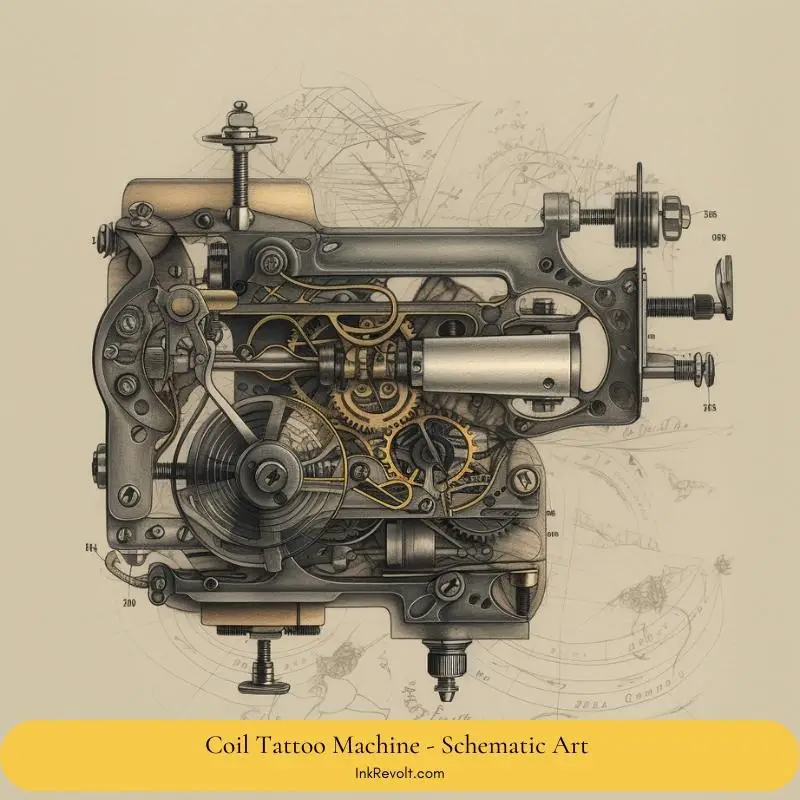
Coil tattoo machines are the most traditional and widely used machines in the tattoo industry. They utilize electromagnetic coils to drive the needle up and down, creating a buzzing sound during operation.
Components and Function
Coil machines consist of several key components, including:
- Frame
- Coils
- Armature bar
- Springs
- Binding posts
- Contact screw
- Capacitor
These components work in harmony to create the characteristic buzzing motion that drives the needle into the skin.
Liner vs. Shader Machines
Coil tattoo machines are often divided into two categories: liners and shaders. Liner machines are designed for outlining and fine detail work, whereas shader machines are used for filling in larger areas and creating smooth gradients.
2. Rotary Tattoo Machines
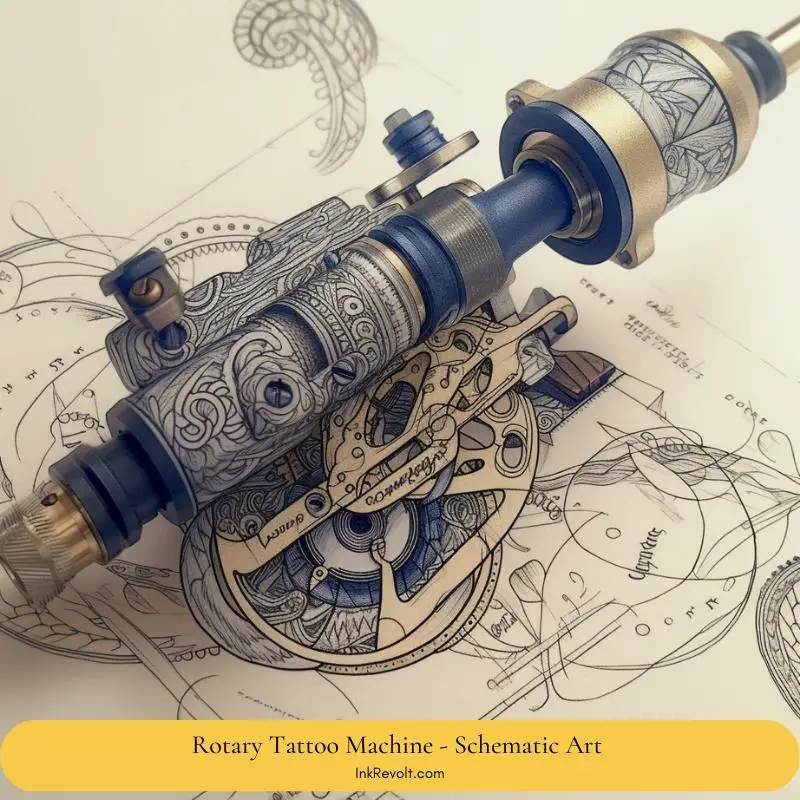
Rotary tattoo machines operate using a small motor to rotate the needle in a smooth, cyclical motion. This design offers less noise and vibration compared to coil machines, making them popular among artists who prefer a more consistent and quieter tattooing experience.
Mechanism and Benefits
Rotary machines feature an electric motor directly connected to the needle bar, which results in a more consistent needle movement. Some benefits of rotary machines include:
- Lower noise levels
- Less vibration
- Consistent needle motion
- Greater versatility
3. Pneumatic Tattoo Machines
Pneumatic tattoo machines are a relatively new addition to the industry, using compressed air to drive the needle. These machines are lightweight, low-maintenance, and offer the potential for single-use components to improve sterility.
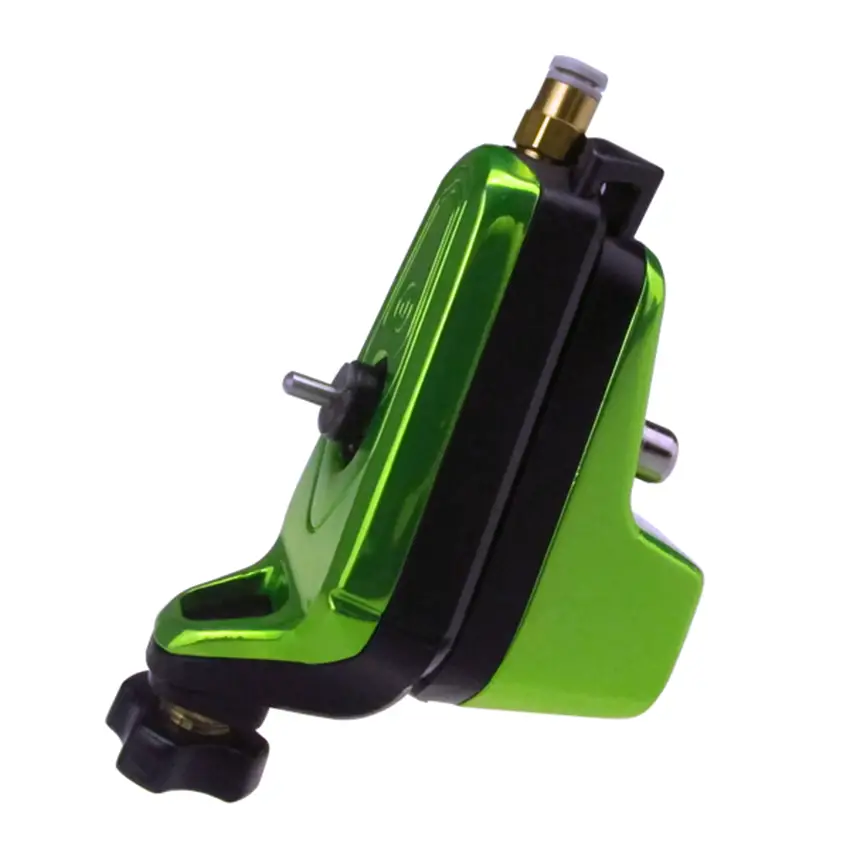
Air-Powered Technology
Pneumatic machines rely on an external air compressor to power the needle’s movement. The absence of electromagnetic coils and other heavy components makes these machines lightweight and easy to handle.
Advantages and Disadvantages
While pneumatic machines have their benefits, they also come with some drawbacks, such as:
- Higher cost
- Dependency on an external air compressor
- Limited availability
Tattoo Machine Components and Functions
Understanding the function of each component in a tattoo machine is essential for proper operation, maintenance, and troubleshooting.
Frame
The frame is the backbone of the tattoo machine, supporting and aligning all other components. Frames are typically made from materials like brass, iron, or aluminum, and their geometry directly influences the machine’s performance.
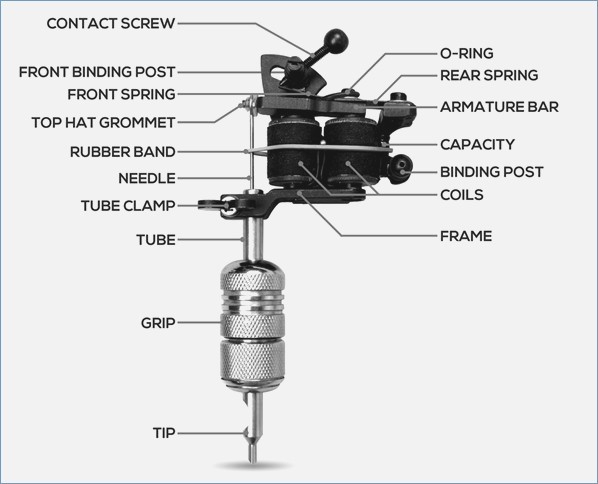
Coils
Coils are electromagnetic components responsible for driving the needle. They consist of wire wrapped around an iron core, with the number of wraps affecting the machine’s performance. Coil resistance determines the machine speed (CPS) and the overall power of the tattoo machine.
Armature Bar
The armature bar connects the springs and needles, playing a pivotal role in the machine’s performance. Its design and weight can impact factors like machine speed, stroke length, and vibration.
Springs and Spring Assembly
The spring assembly consists of front and rear springs, which control the machine’s stroke and tension. Adjusting the springs can fine-tune the machine’s performance, allowing for customization based on the artist’s preferences.
Binding Posts and Contact Screw
Binding posts and contact screws form the electrical connection between the power supply and the machine. Adjusting the contact screw can change the machine’s performance by altering factors like stroke length and machine speed.
Capacitor
The capacitor is an essential component for stabilizing the machine’s performance. It stores and releases electrical energy, smoothing out voltage fluctuations to ensure consistent needle movement.
Tubes and Grips
Tubes, also known as grips, guide the needle during operation and provide a comfortable handhold for the tattoo artist. Tubes come in various materials like stainless steel, aluminum, or disposable plastic. Securing tubes with tube vices or clamps ensures proper alignment and stability during tattooing.
Needle Bar and Needles
The needle bar connects the needle to the armature bar and influences the needle’s movement. Tattoo needles come in various types, including round liners, round shaders, magnums, and curved magnums. Needle grouping refers to the arrangement of needles soldered together on the needle bar, which affects ink flow and penetration. Adjusting the needle depth allows for control over how deep the needle penetrates the skin.
Tattoo Machine Connections and Power Supply
To power a tattoo machine, artists must connect it to a suitable power supply using various connection types, such as clip cords, RCA cords, or wireless connections. Selecting the right power supply and adjusting voltage settings ensures optimal performance for different tattooing techniques.
Tattoo Machine Performance Factors
Several factors impact a tattoo machine’s performance, including stroke (throw), duty cycle, machine speed (CPS), and give.
- Machine stroke (throw): Refers to the distance the needle travels during a single cycle of the tattoo machine, affecting the needle’s penetration depth and the machine’s overall performance.
- Duty cycle: Represents the machine’s efficiency and runtime, calculated as the percentage of time the needle spends in the skin during each cycle.
- Machine speed (CPS): Measures the frequency of needle movement, with faster speeds typically preferred for lining and slower speeds for shading.
- Give: Describes the flexibility or movement in the needle during operation, allowing for greater control and a more forgiving tattooing experience.
Additional Tattoo Machine Terminology
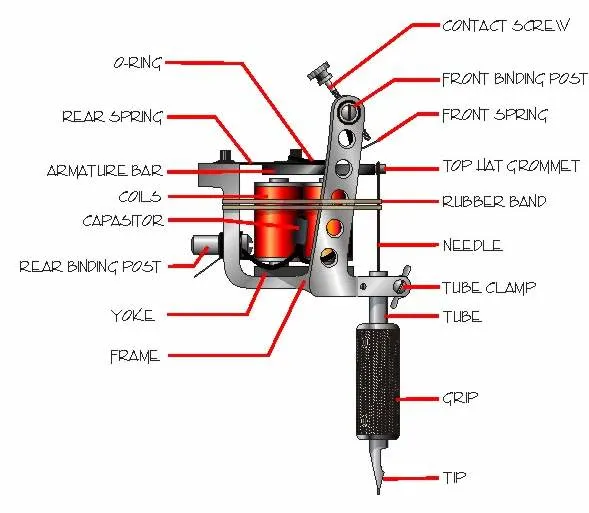
- Nipple (Grommet): A small rubber piece that stabilizes the needle bar and reduces vibrations during tattooing.
- A-bar nipple: A similar rubber component placed on the armature bar, connecting the needle loop to maintain stability during operation.
- Rubber bands: Small elastic bands used to stabilize the needle and reduce vibrations.
Regular Maintenance and Troubleshooting
Regular cleaning, sterilization, and maintenance of your tattoo machine ensure optimal performance and longevity. Developing troubleshooting skills will help you identify and resolve common issues, such as erratic needle movement, inconsistent power, or excessive noise.
Conclusion
Mastering tattoo machine terminology and understanding the intricacies of each component are essential for professional growth and success in the tattoo industry. Armed with this knowledge, you’ll be better equipped to select, operate, and maintain your tattoo machines with confidence and precision.
